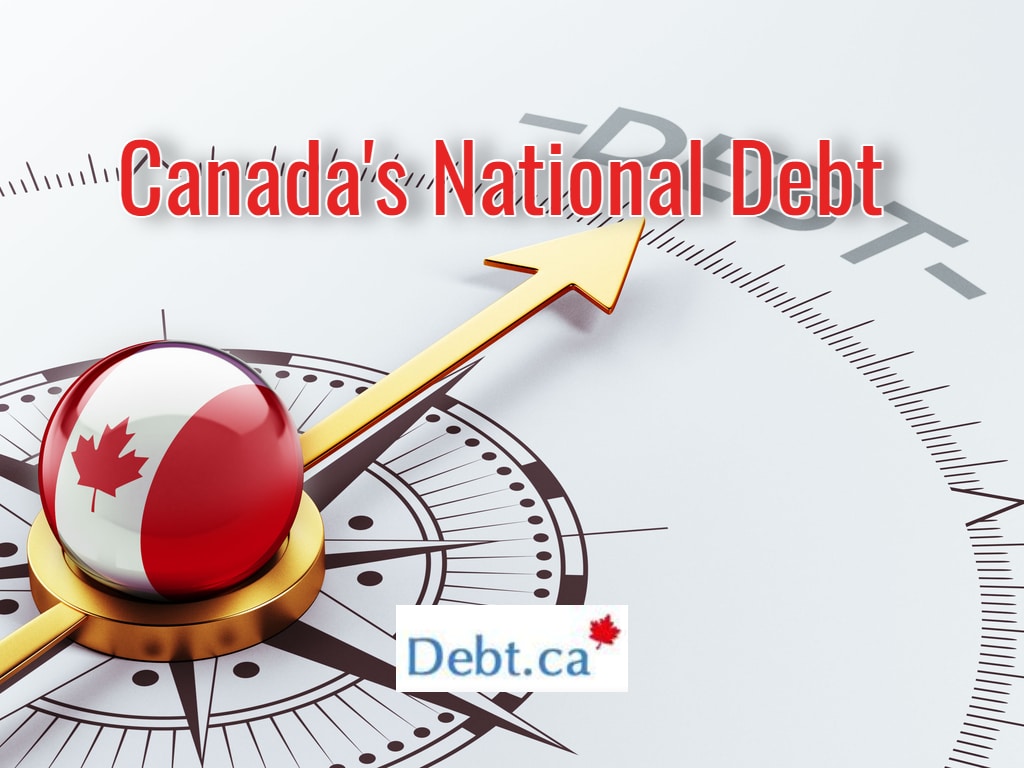Canada’s debt has grown significantly in recent years. However, the most important thing to understand is that “debt” means different things depending on how it is measured. This is especially important today, as the government often reports a narrower measure than broad totals used historically.
How much debt does Canada have?
In 2019, Canada’s gross debt—the total debt of the federal, provincial, territorial, and local governments combined—was about $2.434 trillion, or $64,087 per person. This figure includes all obligations, like public pension liabilities.
By 2023, this consolidated gross debt grew to approximately $3.18 trillion, about 103.5% of GDP, according to Statistics Canada’s latest government finance statistics. The federal government’s share is estimated at $1.64 trillion (55.9% of GDP), with provinces and municipalities owing the rest.
Today, the government reports a different number: federal market debt. This was projected to be about $1.619 trillion in 2025. It counts only the money the federal government has borrowed by issuing bonds and treasury bills in financial markets. It excludes other debts, like provincial and local government debt.
The gross debt-to-GDP ratio stands at about 112%, an estimate for this fiscal year. Public sector liabilities now outpace Canada’s annual economic output. Of the total market debt, the federal government accounts for $1.293 trillion (about 80%), with provinces and territories making up the remainder.
Why does this matter to the average Canadian?
High government debt in Canada has direct and indirect consequences for Canadian citizens. High debt means higher interest payments. The federal government pays billions in interest every year. This money could otherwise be spent on public services or invested. As debt grows, a larger portion of the available budget goes to interest payments, leaving less for things like healthcare or infrastructure. Escalating debt could lead to reduced spending on public programs, meaning budget cuts in areas like healthcare, education, and social support programs. It’s not just the federal government; provincial governments also carry substantial debt. This similarly affects spending at the regional level.
Ever-increasing debt can lead to long-term economic consequences as well, like slower income growth for households. High debt also shifts the financial burden to future generations, who will likely face higher taxes and fewer benefits tomorrow to pay off today’s borrowing. This can lead to intergenerational economic inequity. Another notable point is that foreign investors hold a significant portion of Canada’s government debt. This means that interest payments leave the country instead of benefiting the domestic economy. Overall, if debt grows faster than the economy, it becomes less sustainable. It affects future growth, development opportunities, and policy flexibility and responsiveness.
Deficits from 2019 to today
In 2019 (the fiscal year ending March 2020), the federal government of Canada, along with its local, territorial, and provincial governments, registered a $25.3 billion deficit. In contrast, the consolidated Canadian general government recorded a $2.6 billion surplus in 2018. This 2019 deficit is equivalent to 1.1% of the country’s GDP, which is the highest since 2012. Of this, the federal government’s portion was around $11.9 billion, with provinces and territories adding $13.4 billion.
When the COVID-19 pandemic struck, deficit levels soared:
- 2020–21: Federal deficit peaked at $327.7 billion
- 2021–22: Federal deficit was $90.2 billion
- 2022–23: $35 billion.
- 2023–24: Roughly $35.3 billion
- 2024–25 (projected): About $39.8 billion
While early pandemic forecasts predicted even larger deficits, the actual numbers have been sizable but somewhat lower than projections.
Net debt
Gross debt doesn’t consider the government’s financial assets like the Canada Pension Plan and investment holdings. Net debt subtracts these assets from gross debt to give a fuller picture of what the government truly owes.
The only catch with net debt as a measure is that it’s hard to value some of the government’s assets. Besides gross debt and net debt, you also need to know about quantifying government debt based on public accounts and national accounts. It’s crucial since what you see across the news is different data measurements that may confuse viewers or readers.
As of 2023, consolidated net debt was around $1.41 trillion, or 47.9% of GDP. The federal government’s net debt was roughly $914 billion (31.2% of GDP).
Where does the Canadian government borrow money from?
The primary lenders of the Canadian government are domestic and foreign financial institutions. These include big corporations, insurance companies, banks, investment funds, pension funds, etc.
These financial institutions buy bonds and treasury bills from the government. Bonds are fixed-income securities that governments or other large corporations issue to investors so that the former can maintain ongoing operations, finance new investments or projects, or pay off existing debts.
Supply and demand determine bond interest rates. If the demand for bonds is high relative to their supply, interest rates will be low. High-interest rates occur when demand for bonds is low.
Bonds issued by the government are intended for long-term financing. Besides bonds, the government also issues savings bonds for the retail market and treasury bills for short-term financing.
Why does Canada borrow money?
Before the pandemic, borrowing paid for new programs and expanded social services. From 2020 to 2022, massive borrowing funded emergency pandemic relief for businesses and households. Now, borrowing supports healthcare transfers, housing affordability, childcare, eldercare, and clean energy investments. A large chunk of the existing borrowing is used to pay off maturing debt, which limits funds for public services. At the same time, the government is still strategically borrowing to invest in these areas. Managing debt is a balancing act, where the government has to manage existing debt even while strategically taking on more debt to invest in important programs.
Takeaway
In 2019, Canada’s gross government debt was around $2.4 trillion (105% of GDP). By 2023, that number had increased to approximately $3.18 trillion (103.5% of GDP). However, distinctions in calculation methods matter — the federal government’s directly held debt (market debt) is just under $1.62 trillion for 2024/25. Net debt, which subtracts financial assets, is at around $1.41 trillion or 48% of GDP.
These different measures help explain why debt figures can look very different depending on the source, but all show a significant rise in Canada’s borrowing and ongoing fiscal challenges since 2019. Along with government debt, personal debt is also rising. If you are trying to manage your personal finances and get out of debt, you can contact one of our trained credit counsellors for advice. They can help you identify which debt relief strategy could be the right fit for your specific situation.











